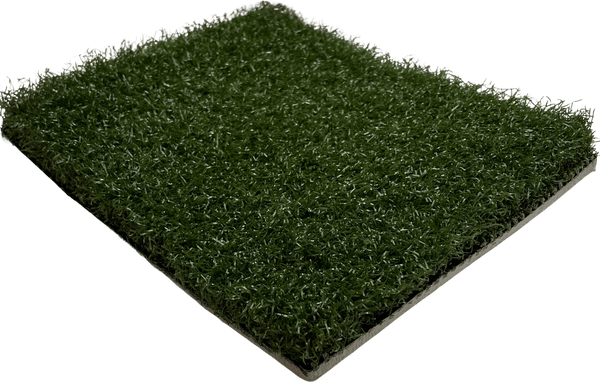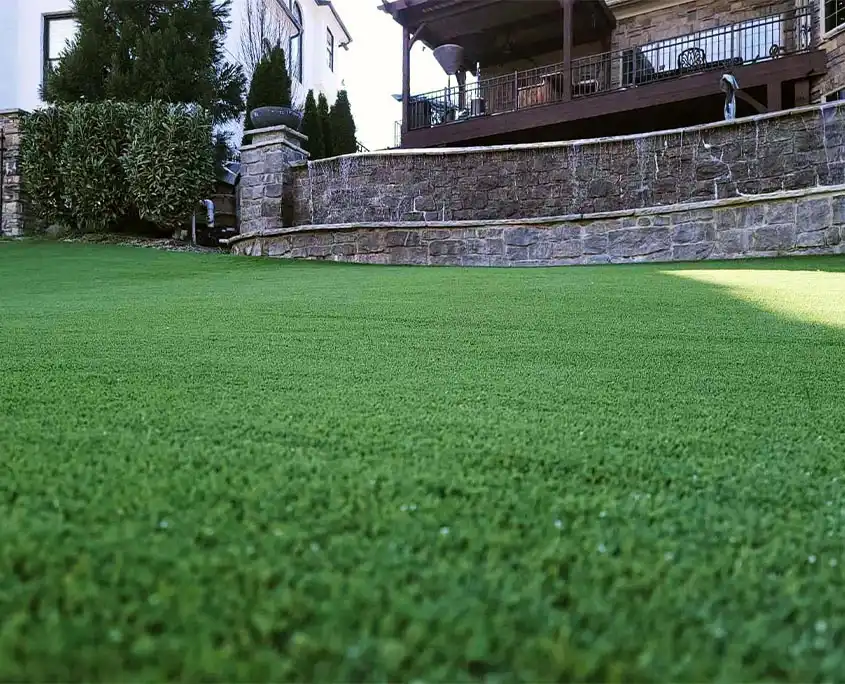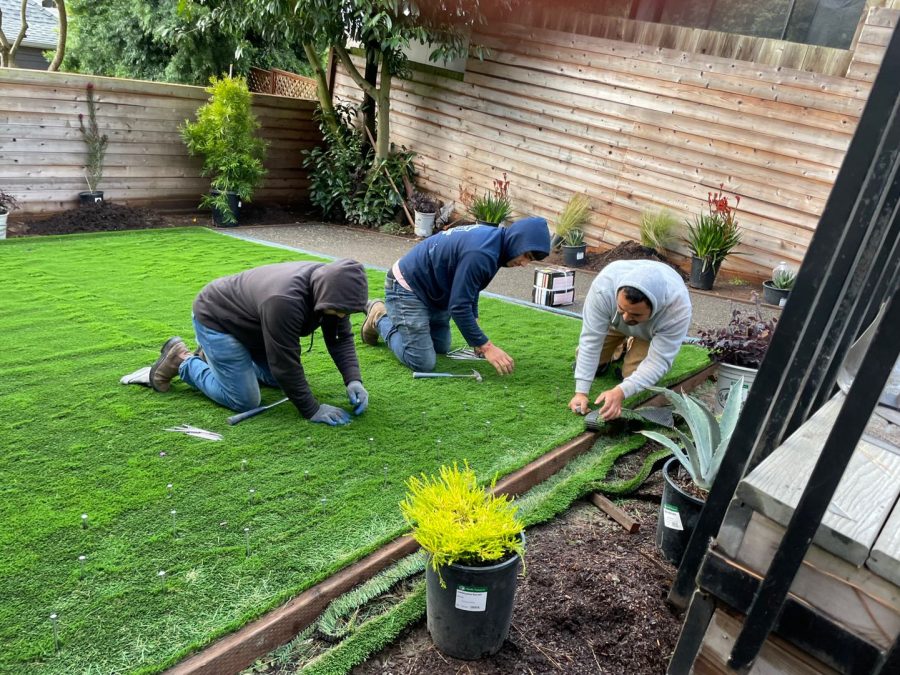Well-Known Artificial Turf Companies Phoenix for a Attractive and Green Lawn
Well-Known Artificial Turf Companies Phoenix for a Attractive and Green Lawn
Blog Article
Look Into the Environmental Conveniences of Opting for Synthetic Grass Solutions
The fostering of synthetic lawn services provides a compelling opportunity to deal with pressing environmental challenges. By significantly reducing water usage and lessening the application of hazardous chemicals, these choices not only advertise lasting landscaping however additionally protect neighborhood ecological communities.
Water Preservation Advantages
One of the most considerable advantages of synthetic lawn is its capacity to save water. In comparison, synthetic lawn does not require watering, considerably lowering the general demand for water resources.
By eliminating the need for routine watering, synthetic grass contributes to lasting landscape practices and aids mitigate the environmental influence of excessive water usage. Additionally, the preservation of water prolongs to the decrease of overflow, which can cause dirt erosion and river pollution.
Additionally, the installment of fabricated turf enables districts and homeowners to allocate water resources much more efficiently, concentrating on vital uses such as alcohol consumption water and farming. The shift towards artificial turf not only advertises responsible water usage but also lines up with more comprehensive environmental goals targeted at protecting all-natural resources.
As neighborhoods significantly focus on sustainability, the water conservation benefits of artificial turf provide a compelling case for its adoption in commercial and residential landscape design jobs.
Lowered Chemical Usage
The shift to synthetic grass dramatically lowers the reliance on chemical treatments commonly utilized in all-natural lawn upkeep. Conventional grass management typically entails the application of herbicides, plant foods, and pesticides to advertise growth and control parasites. These chemicals can position dangers to human health and wellness, local wildlife, and the atmosphere, adding to dirt and water contamination.
In contrast, synthetic grass eliminates the need for these dangerous materials. As soon as mounted, it needs minimal upkeep, mostly containing routine cleaning and occasional infill replenishment. This reduction in chemical use not just benefits the prompt setting however also adds to more comprehensive eco-friendly stability. By decreasing the launch of synthetic substances right into the ecological community, synthetic grass promotes much healthier dirt and water supply.
Furthermore, the absence of chemical runoff connected with man-made lawn installations aids secure neighborhood waterways from contamination, supporting water life and maintaining biodiversity. Artificial turf companies phoenix. As communities increasingly focus on lasting techniques, deciding for synthetic grass provides a sensible service that lines up with ecological preservation goals. Through this shift, residential or commercial property proprietors can enjoy lavish green spaces without jeopardizing environmental health and wellness, paving the method for an extra sustainable future
Reduced Carbon Impact

In addition, the installment of man-made lawn can cause significant water preservation. Natural grass need significant quantities of water for watering, which not only includes in the carbon impact associated with water extraction and treatment yet likewise pressures neighborhood water sources. content On the other hand, synthetic grass needs very little upkeep, calling for no watering, consequently considerably reducing water use and its linked energy costs.
Additionally, the long life of artificial turf adds to its lower carbon effect. With a life-span of approximately 15 years or even more, the need for regular substitutes is diminished, resulting in less waste and reduced power consumption in production and getting rid of typical lawn choices. On the whole, synthetic grass provides a lasting option for environmentally conscious landscape design.
Environment Conservation
Habitat preservation is an important consideration in the debate over landscape design choices, particularly when check these guys out contrasting synthetic turf to all-natural grass. All-natural turf lawns often need extensive maintenance, including making use of plant foods, chemicals, and herbicides, which can negatively impact regional ecological communities. These chemicals can leach right into the dirt and rivers, damaging native flora and animals and disrupting neighborhood environments.
In contrast, synthetic grass offers an opportunity to minimize the environmental footprint of landscaping. By choosing synthetic grass, property owners can lessen the disruption of all-natural habitats associated with typical grass treatment practices. Synthetic grass gets rid of the demand for damaging chemicals, therefore shielding close-by wild animals and keeping the honesty of surrounding ecosystems. In addition, the installment of artificial grass can result in the conversion of former lawn areas into even more biodiverse landscapes, such as pollinator yards or native plant locations, which can sustain regional wild animals.
Eventually, the transition to synthetic turf not just conserves water and reduces upkeep efforts however likewise cultivates a much more unified connection in between human tasks and the all-natural setting, advertising environment conservation at the same time.
Long-Term Sustainability
Lasting sustainability is an important consider assessing the advantages of synthetic grass over standard lawn lawns. Among the most significant advantages of synthetic grass is its sturdiness; it can last as much as 15-20 years with very little maintenance, whereas natural turf needs constant reseeding and substitute. This durability minimizes the requirement for continuous resources, such as read this water, plant foods, and pesticides, which are necessary for maintaining a healthy and balanced grass lawn.
In addition, synthetic grass adds to a decrease in carbon emissions related to yard care devices. Typical yards usually call for gas-powered lawn mowers, leaners, and blowers, every one of which add to air contamination. Arizona artificial turf. In contrast, artificial lawn gets rid of the requirement for such equipment, advertising a cleaner environment
Moreover, the manufacturing of artificial lawn significantly uses recycled products, improving its sustainability profile. As suppliers adopt eco-friendly techniques, the environmental impact of artificial lawn remains to lessen.

Verdict
The fostering of synthetic grass solutions offers substantial environmental benefits, including significant water preservation, reduced reliance on hazardous chemicals, and a reduced carbon footprint. In addition, artificial lawn help in preserving all-natural environments by minimizing land disruption and advertising long-lasting sustainability through the use of sturdy products. Jointly, these factors underscore the potential of fabricated turf to add favorably to ecological health and wellness and supply a viable choice to traditional landscaping methods in an increasingly resource-conscious globe.
In comparison, artificial turf does not require watering, significantly minimizing the total demand for water sources. By reducing the release of synthetic substances right into the community, man-made turf advertises healthier soil and water systems.
In addition, the installation of man-made grass can result in substantial water preservation. In comparison, synthetic grass needs marginal maintenance, needing no watering, thereby significantly lowering water use and its linked energy costs.

Report this page